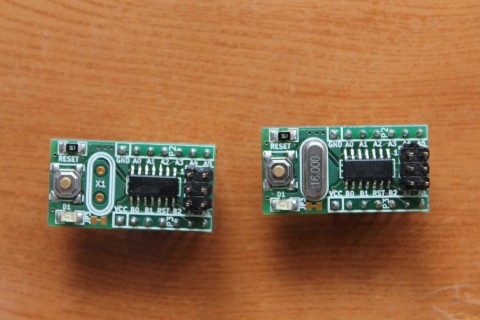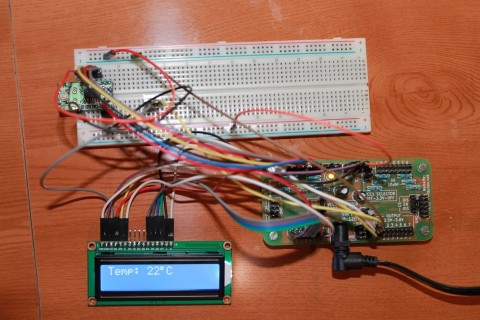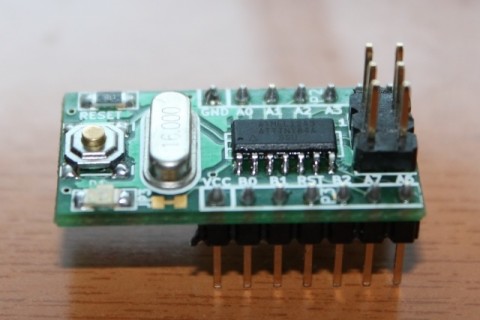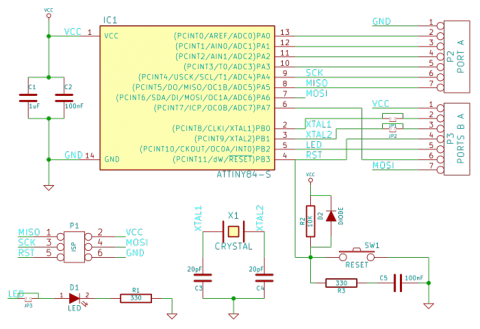BetaBrd - Breakout Board for Atmel AVR ATtiny84A, 44A or 24A
In the course of the last few months, I built and worked with this flexible breakout board in order to test the ATtiny84A, ATtiny44A and ATtiny24A capabilities in a mesh network. It performed very well and satisfied the needs completely. Now, I would like to offer you the chance to use the BetaBrd in your own projects.
The BetaBrd is deisgned to be put on a breadboard and used with an external power supply (5V, 3.3V or any other voltage supported by the ATtiny). It has an LED indicator (D1) tied to pin B2, a place for a quartz crystal (up to 20MHz), a reset button, a robust reset circuit built according to Atmel recommendations and several onboard jumpers for configuration. The board can be used with or without the quartz crystal (without the quartz crystal, you gain two additional IO pins but you cannot run the board at frequencies above the 8 MHz of the internal RC oscillator).
The BetaBrd provides access to all ATtiny pins via two pin header strips and has an additional standard 6-pin ISP header for programming and/or power provision. The board and the ATtiny microcontrollers are compatible with the usual programming toolchains. In my project, I used USBasp programmers and Avrdude to program the board and, in some cases, to power it via the ISP header.
While I do not use the Arduino platform in my daily activities, I ran successfully several Arduino projects on BetaBrd. The board played very nicely with the Arduino libraries. For the purpose, I used the arduino-tiny project at http://code.google.com/p/arduino-tiny/ and tested on ATtiny84A and ATtiny44A.
What I was interested in, was the creation of a mesh network on the basis of the Nordic Semiconductor nRF24L01+ radio transmitters. In the picture above, you can see a BetaBrd connected to an nRF24L01+ (the small board on the far left side of the picture) via the USI interface. The blinking yellowish LED of the BetaBrd is controlled by another board via the radio transmitter.
In the picture above, you can see a test of the internal temperature sensor of the ATtiny. The BetaBrd is running at 3.3V on its internal RC oscillator. My custom AlphaBrd power supply and voltage level translator board (on the right side of the picture) is used to generate the main voltage. The AlphaBrd also powers and interfaces with the character LCD display which operates at 5V.
Both the BetaBrd and the AlphaBrd performed very well in my tests spanning several months. Both boards were designed using the open-source software KiCad. Below, you can see the KiCad schematic of the prototype of the BetaBrd.
Video demonstration:
If you wish to know more about the board, please drop me a note using the about page.







